Your guide to understanding how roll works on artificial turf.
The Physics of Golf
Physics. It influences everything we do, including the beloved game of golf.
Physics, is the nature and properties of matter and energy: the hitting of the ball, the ball’s path in flight, its initial bounce, and its roll out.
In an ideal situation, the ground in the direction of the shot would be perfectly flat, perfectly uphill, or perfectly downhill would be perfectly flat, perfectly uphill, or perfectly downhill in the direction of the shot. This would make targeting the ball into the hole an easy act and hitting it along a straight line.
That said, you will learn that the ground is sloped. Now the ball trajectory can’t be a straight path to get in the hole, meaning it is a more complicated task. When this happens, the ball has to follow a precise curved path to get into the hole. How much the ball has to curve is dependent on the degree of the putting green’s slope and undulation.
Whether artificial grass or natural grass is used to build your dream backyard putting green, the physical characteristics of the surface factor into the performance. We utilize a combination of common golf course tests and our proprietary playability testing.
One common test to test ball roll is the stimpmeter test. Stimp testing calculates the distance a ball rolls on artificial turf in meters when it’s released from one meter. The ball-to-surface interaction of the grass is directly related to the distance of the ball roll.
The proprietary playability testing for roll provides an analysis of the consistency of outputs from a standard putting stroke. This test analyzes the initial bounce of the club face and the spin to roll transition.
Now we’ll take a deeper look at the elements that influence how a golf ball reacts and rolls on a turf.
Green Characteristics
Product Construction: Plastics that are extruded and recycled and available in a mixture of constructions, colors, and lengths. Proper construction is vital to enable key putting green installation practices; construction enables turf to be infilled and rolled. Properly rolled fibers appear and play like natural greens.
Pile Height: How thick and tall the grass blades are will provide varied frictions; impacting the speed and smoothness of your putt.
Fiber: Fiber composition has a substantial effect on how a golf ball moves throughout the putt. Friction and pile lay are influenced by fiber composition. How the ball interacts with the surface is impacted by how the turf lays.
Infill: Essential to the turf system, infill is composed of rounded washed silica. Infill gives ballast and helps drainage. The shape of the infill is vital to performance; sharp edges and angles create roll disruptions.
Aggregate Base: Compacted stone creates challenging slopes and undulations; the result performs and drains like a championship golf course.
The formula to creating a Backyard Putting Green that performs like a Championship Golf Green uses the ideal raw materials with elite-proven-tested installation techniques. Especially important when you are on the putting green seeking to gently get the ball into the hole.
The Southwest Greens Difference
Southwest Greens have been able to quantify key performance indicators. By understanding which variables influence performance, we are able to replicate natural greens.
With Golden Bear Turf, you will enjoy smoother rolls comparable to playing on your favorite championship course. Scientifically tested and developed to replicate natural grass, from the initial bounce off the clubface... to the spin transition… to the smooth ball roll into the cup...
Golden Bear give you only the best! It is the ideal backyard practice putting green that offers the most realistic putting surfaces on the market.
